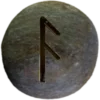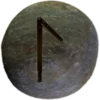Last Updated on December 10, 2024


A Moot (pronounced “moot,” rhymes with “root”) serves as a community gathering in Asatru practices. It brings people together to share wisdom, honor traditions, and strengthen bonds. Moots often occur outdoors, but some groups meet in homes, halls, or other communal spaces. While “Moot” is the most common spelling, some variations include “Thing” or “Folkmoot,” depending on regional preferences.
Moots provide an open forum for Asatru practitioners to discuss ideas, plan ceremonies, and resolve disputes. In ancient times, gatherings like these helped maintain harmony within communities. Today, they preserve this spirit by offering a platform for shared learning and collective decision-making. Moots also serve as a bridge between personal spirituality and communal engagement, making them a cornerstone of Asatru practice.
Activities during a Moot vary. Some include workshops on rune studies, discussions of lore, or storytelling sessions. Others feature blóts (ceremonial offerings) or sumbels (ritual toasts). Meals often follow ceremonies, reinforcing bonds through shared food. Moots also welcome families, ensuring children learn the traditions in an inclusive environment.
The word “Moot” originates from Old English and shares ties with the Norse “Thing,” which referred to assemblies for governance or justice. The concept extends beyond spiritual practices, representing a gathering where each voice matters. Moots allow participants to connect with the divine, ancestors, and each other.
By fostering unity and learning, Moots maintain the strength and vitality of Asatru communities. They honor ancient customs while adapting to modern needs, ensuring the tradition remains vibrant and relevant.
Elder Futhark Runes Associated with Moots 
The Gebō rune (ᚷ), pronounced “gay-bo,” represents gifts, partnerships, and mutual obligations. It symbolizes the exchange of ideas and cooperation found at Moots. This rune highlights the reciprocity between individuals and the community.
The Ansuz rune (ᚨ), pronounced “ahn-sooz,” stands for communication and divine inspiration. It reflects the importance of speaking, listening, and sharing wisdom at a Moot. The rune emphasizes the sacred connection formed through dialogue.
Together, these runes embody the spirit of collaboration and the exchange of knowledge central to Moots.
Importance to Asatruar
Moots are vital for building and maintaining Asatru communities. They provide spaces where individuals connect with shared values and traditions. By gathering for discussions and ceremonies, Asatruar strengthen their spiritual practices and social bonds.
These assemblies also preserve oral traditions, ensuring wisdom passes between generations. Moots foster belonging, making individuals feel part of something larger. They encourage collaboration, helping communities grow stronger through mutual support.
For Asatruar, Moots balance personal faith with collective action, honoring the gods while nurturing relationships within their kindred.

